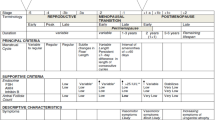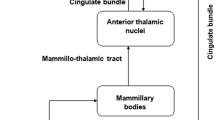Abstract
Oral contraceptives (OCs), often referred to as “the pill”, are the most commonly employed form of reversible contraception. OCs are comprised of combined synthetic estrogen and progestin, which work to suppress ovulation and subsequently protect against pregnancy. To date, almost 200 million women have taken various formulations of OC, making it one of the most widely consumed classes of medication in the world. While a substantial body of literature has been dedicated to understanding the physical effects of OCs, much less is known about the long term consequences of OC use on brain anatomy and the associated cognitive effects. Accumulating evidence suggests that sex hormones may significantly affect human cognition. This phenomenon has been commonly studied in older populations, such as in post-menopausal women, while research in healthy, pre-menopausal women remains limited. The current review focused on the effects of OCs on human cognition, with the majority of studies comparing pre-menopausal OC users to naturally cycling women. Human neuroimaging data and animal studies are also described herein. Taken together, the published findings on OC use and human cognition are varied. Of those that do report positive results, OC users appear to have improved verbal memory, associative learning and spatial attention. We recommend future research to employ blinding procedures and randomised designs. Further, more detailed information pertaining to the specific generation and phasic type of OCs, as well as menstrual cycle phase of the OC non-users should be considered to help unmask the potential impact of OC use on human cognition.
Similar content being viewed by others
References
Chadwick KD et al (2012) Fifty years of “the pill”: risk reduction and discovery of benefits beyond contraception, reflections, and forecast. Toxicol Sci 125(1):2–9
Ross GT, Vande Wiele RL (1974) The ovaries. In: Williams RH (ed) Textbook of endocrinology. Philadelphia, W. B. Saunders, pp 368–393
Ganong WF (1979) Review of medical physiology, 9th edn. Lange Medical Publications, California, pp 340–350
Simpson E et al (1999) Local estrogen biosynthesis in males and females. Endocr Relat Cancer 6(2):131–137
Ozawa H (2005) Steroid hormones, their receptors and neuroendocrine system. J Nippon Med Sch 72(6):316–325
Srivastava DP, Woolfrey KM, Penzes P (2013) Insights into rapid modulation of neuroplasticity by brain estrogens. Pharmacol Rev 65(4):1318–1350
Ishii H et al (2007) Local production of sex hormones and their modulation of hippocampal synaptic plasticity. Neuroscientist 13(4):323–334
Wu YC et al (2013) Sex differences and the role of estrogen in animal models of schizophrenia: interaction with BDNF. Neuroscience 239:67–83
Sanchez MG et al (2010) Steroids-dopamine interactions in the pathophysiology and treatment of CNS disorders. CNS Neurosci Ther 16(3):e43–e71
Finocchi C, Ferrari M (2011) Female reproductive steroids and neuronal excitability. Neurol Sci 32(Suppl 1):S31–S35
Goodman Y et al (1996) Estrogens attenuate and corticosterone exacerbates excitotoxicity, oxidative injury, and amyloid beta-peptide toxicity in hippocampal neurons. J Neurochem 66(5):1836–1844
Garcia-Segura LM et al (1998) Estradiol upregulates Bcl-2 expression in adult brain neurons. NeuroReport 9(4):593–597
Rivera R, Yacobson I, Grimes D (1999) The mechanism of action of hormonal contraceptives and intrauterine contraceptive devices. Am J Obstet Gynecol 181(5 Pt 1):1263–1269
Wharton W et al (2008) Oral contraceptives and androgenicity: influences on visuospatial task performance in younger individuals. Exp Clin Psychopharmacol 16(2):156–164
Van Vliet HA et al (2006) Biphasic versus monophasic oral contraceptives for contraception. Cochrane Database Syst Rev 3:CD002032
Lawrie TA et al (2011) Types of progestogens in combined oral contraception: effectiveness and side-effects. Cochrane Database Syst Rev 5:CD004861
Mordecai KL, Rubin LH, Maki PM (2008) Effects of menstrual cycle phase and oral contraceptive use on verbal memory. Horm Behav 54(2):286–293
DiLiberti CE et al (2011) Steady-state pharmacokinetics of an extended-regimen oral contraceptive with continuous estrogen. Contraception 83(1):55–61
Prokai-Tatrai K, Prokai L (2005) Impact of metabolism on the safety of estrogen therapy. Ann N Y Acad Sci 1052:243–257
Zec RF, Trivedi MA (2002) The effects of estrogen replacement therapy on neuropsychological functioning in postmenopausal women with and without dementia: a critical and theoretical review. Neuropsychol Rev 12(2):65–109
Sherwin BB (2012) Estrogen and cognitive functioning in women: lessons we have learned. Behav Neurosci 126(1):123–127
Craig MC et al (2010) The interactive effect of acute ovarian suppression and the cholinergic system on visuospatial working memory in young women. Psychoneuroendocrinology 35(7):987–1000
Janicki SC, Schupf N (2010) Hormonal influences on cognition and risk for Alzheimer’s disease. Curr Neurol Neurosci Rep 10(5):359–366
Bayer U, Hausmann M (2009) Estrogen therapy affects right hemisphere functioning in postmenopausal women. Horm Behav 55(1):228–234
Maki PM, Sundermann E (2009) Hormone therapy and cognitive function. Hum Reprod Update 15(6):667–681
LeBlanc ES et al (2001) Hormone replacement therapy and cognition: systematic review and meta-analysis. JAMA 285(11):1489–1499
Maki PM (2006) Hormone therapy and cognitive function: is there a critical period for benefit? Neuroscience 138(3):1027–1030
Hampson E (1990) Variations in sex-related cognitive abilities across the menstrual cycle. Brain Cogn 14(1):26–43
Maki PM, Rich JB, Rosenbaum RS (2002) Implicit memory varies across the menstrual cycle: estrogen effects in young women. Neuropsychologia 40(5):518–529
Rosenberg L, Park S (2002) Verbal and spatial functions across the menstrual cycle in healthy young women. Psychoneuroendocrinology 27(7):835–841
Braff DL, Geyer MA, Swerdlow NR (2001) Human studies of prepulse inhibition of startle: normal subjects, patient groups, and pharmacological studies. Psychopharmacology 156(2–3):234–258
Gogos A (2013) Natural and synthetic sex hormones: effects on higher-order cognitive function and prepulse inhibition. Biol Psychol 93(1):17–23
Bannbers E et al (2010) Lower levels of prepulse inhibition in luteal phase cycling women in comparison with postmenopausal women. Psychoneuroendocrinology 35(3):422–429
Borgstrom A et al (2008) Patients with adverse mood effects from combined oral contraceptives have lower levels of prepulse inhibition than healthy controls. Psychoneuroendocrinology 33(4):487–496
Swerdlow NR, Hartman PL, Auerbach PP (1997) Changes in sensorimotor inhibition across the menstrual cycle: implications for neuropsychiatric disorders. Biol Psychiatry 41(4):452–460
Jovanovic T et al (2004) Menstrual cycle phase effects on prepulse inhibition of acoustic startle. Psychophysiology 41(3):401–406
Kumari V et al (2010) Evidence for a role of progesterone in menstrual cycle-related variability in prepulse inhibition in healthy young women. Neuropsychopharmacology 35(4):929–937
Gogos A et al (2006) Estrogen prevents 5-HT1A receptor-induced disruptions of prepulse inhibition in healthy women. Neuropsychopharmacology 31(4):885–889
Beck KD et al (2008) Facilitated acquisition of the classically conditioned eyeblink response in women taking oral contraceptives. Behav Pharmacol 19(8):821–828
Holloway JL, Beck KD, Servatius RJ (2011) Facilitated acquisition of the classically conditioned eyeblink response in females is augmented in those taking oral contraceptives. Behav Brain Res 216(1):301–307
Islam F et al (2008) Short-term changes in endogenous estrogen levels and consumption of soy isoflavones affect working and verbal memory in young adult females. Nutr Neurosci 11(6):251–262
Vranic A, Hromatko I (2008) Content-specific activational effects of estrogen on working memory performance. J Gen Psychol 135(3):323–336
Voyer D, Voyer S, Bryden MP (1995) Magnitude of sex differences in spatial abilities: a meta-analysis and consideration of critical variables. Psychol Bull 117(2):250–270
Griksiene R, Ruksenas O (2011) Effects of hormonal contraceptives on mental rotation and verbal fluency. Psychoneuroendocrinology 36(8):1239–1248
McFadden D (2000) Masculinizing effects on otoacoustic emissions and auditory evoked potentials in women using oral contraceptives. Hear Res 142(1–2):23–33
Egan KR, Gleason CE (2012) Longer duration of hormonal contraceptive use predicts better cognitive outcomes later in life. J Womens Health (Larchmt) 21(12):1259–1266
Nielsen SE et al (2011) Hormonal contraception usage is associated with altered memory for an emotional story. Neurobiol Learn Mem 96(2):378–384
Nielsen SE et al (2013) Hormonal contraception use alters stress responses and emotional memory. Biol Psychol 92(2):257–266
Graham BM, Milad MR (2013) Blockade of estrogen by hormonal contraceptives impairs fear extinction in female rats and women. Biol Psychiatry 73(4):371–378
Mihalik JP et al (2009) The effects of menstrual cycle phase on clinical measures of concussion in healthy college-aged females. J Sci Med Sport 12(3):383–387
Cicinelli E et al (2011) Oral contraceptive therapy modulates hemispheric asymmetry in spatial attention. Contraception 84(6):634–636
Pletzer B et al (2010) Menstrual cycle and hormonal contraceptive use modulate human brain structure. Brain Res 1348:55–62
De Bondt T et al (2013) Does the use of hormonal contraceptives cause microstructural changes in cerebral white matter? Preliminary results of a DTI and tractography study. Eur Radiol 23(1):57–64
Rumberg B et al (2010) Cycle and gender-specific cerebral activation during a verb generation task using fMRI: comparison of women in different cycle phases, under oral contraception, and men. Neurosci Res 66(4):366–371
Mareckova K et al (2014) Hormonal contraceptives, menstrual cycle and brain response to faces. Soc Cogn Affect Neurosci 9(2):191–200
Pletzer B et al (2014) Hormonal contraceptives masculinize brain activation patterns in the absence of behavioral changes in two numerical tasks. Brain Res 1543:128–142
Petersen N et al (2014) Oral contraceptive pill use and menstrual cycle phase are associated with altered resting state functional connectivity. Neuroimage 90:24–32
Bimonte HA, Denenberg VH (1999) Estradiol facilitates performance as working memory load increases. Psychoneuroendocrinology 24(2):161–173
Lewis MC et al (2008) Estradiol-induced enhancement of object memory consolidation involves NMDA receptors and protein kinase A in the dorsal hippocampus of female C57BL/6 mice. Behav Neurosci 122(3):716–721
Luine VN, Jacome LF, Maclusky NJ (2003) Rapid enhancement of visual and place memory by estrogens in rats. Endocrinology 144(7):2836–2844
Markowska AL, Savonenko AV (2002) Effectiveness of estrogen replacement in restoration of cognitive function after long-term estrogen withdrawal in aging rats. J Neurosci 22(24):10985–10995
Voytko ML (2002) Estrogen and the cholinergic system modulate visuospatial attention in monkeys (Macaca fascicularis). Behav Neurosci 116(2):187–197
Morris RG et al (1982) Place navigation impaired in rats with hippocampal lesions. Nature 297(5868):681–683
Nyberg L et al (1996) General and specific brain regions involved in encoding and retrieval of events: what, where, and when. Proc Natl Acad Sci USA 93(20):11280–11285
Squire LR (1992) Memory and the hippocampus: a synthesis from findings with rats, monkeys, and humans. Psychol Rev 99(2):195–231
Miller JF et al (2013) Neural activity in human hippocampal formation reveals the spatial context of retrieved memories. Science 342(6162):1111–1114
Subramanian S et al (2003) Oral feeding with ethinyl estradiol suppresses and treats experimental autoimmune encephalomyelitis in SJL mice and inhibits the recruitment of inflammatory cells into the central nervous system. J Immunol 170(3):1548–1555
Lacreuse A, Herndon JG (2003) Estradiol selectively affects processing of conspecifics’ faces in female rhesus monkeys. Psychoneuroendocrinology 28(7):885–905
Lacreuse A, Wilson ME, Herndon JG (2002) Estradiol, but not raloxifene, improves aspects of spatial working memory in aged ovariectomized rhesus monkeys. Neurobiol Aging 23(4):589–600
Lacreuse A et al (2004) Executive function is less sensitive to estradiol than spatial memory: performance on an analog of the card sorting test in ovariectomized aged rhesus monkeys. Behav Process 67(2):313–319
Lacreuse A, Herndon JG, Moss MB (2000) Cognitive function in aged ovariectomized female rhesus monkeys. Behav Neurosci 114(3):506–513
Bimonte-Nelson HA et al (2004) Ovarian hormones and cognition in the aged female rat: II. progesterone supplementation reverses the cognitive enhancing effects of ovariectomy. Behav Neurosci 118(4):707–714
Bimonte-Nelson HA et al (2003) Ovarian hormones and cognition in the aged female rat: I. Long-term, but not short-term, ovariectomy enhances spatial performance. Behav Neurosci 117(6):1395–1406
Bimonte-Nelson HA et al (2006) Progesterone reverses the spatial memory enhancements initiated by tonic and cyclic oestrogen therapy in middle-aged ovariectomized female rats. Eur J Neurosci 24(1):229–242
Teter B et al (1999) Role of apolipoprotein E and estrogen in mossy fiber sprouting in hippocampal slice cultures. Neuroscience 91(3):1009–1016
Gundlah C et al (2000) Distribution of estrogen receptor beta (ERbeta) mRNA in hypothalamus, midbrain and temporal lobe of spayed macaque: continued expression with hormone replacement. Brain Res Mol Brain Res 76(2):191–204
Rahman Q, Abrahams S, Wilson GD (2003) Sexual-orientation-related differences in verbal fluency. Neuropsychology 17(2):240–246
Rahman Q, Wilson GD, Abrahams S (2003) Sexual orientation related differences in spatial memory. J Int Neuropsychol Soc 9(3):376–383
Acknowledgments
The authors gratefully acknowledge the financial support of the Australian Research Council (A. Gogos, DECRA). The Florey Institute of Neuroscience and Mental Health acknowledge the support from the Victorian Government’s Operational Infrastructure Support Grant.
Author information
Authors and Affiliations
Corresponding author
Rights and permissions
About this article
Cite this article
Gogos, A., Wu, Y.C., Williams, A.S. et al. The Effects of Ethinylestradiol and Progestins (“the pill”) on Cognitive Function in Pre-menopausal Women. Neurochem Res 39, 2288–2300 (2014). https://doi.org/10.1007/s11064-014-1444-6
Received:
Revised:
Accepted:
Published:
Issue Date:
DOI: https://doi.org/10.1007/s11064-014-1444-6




